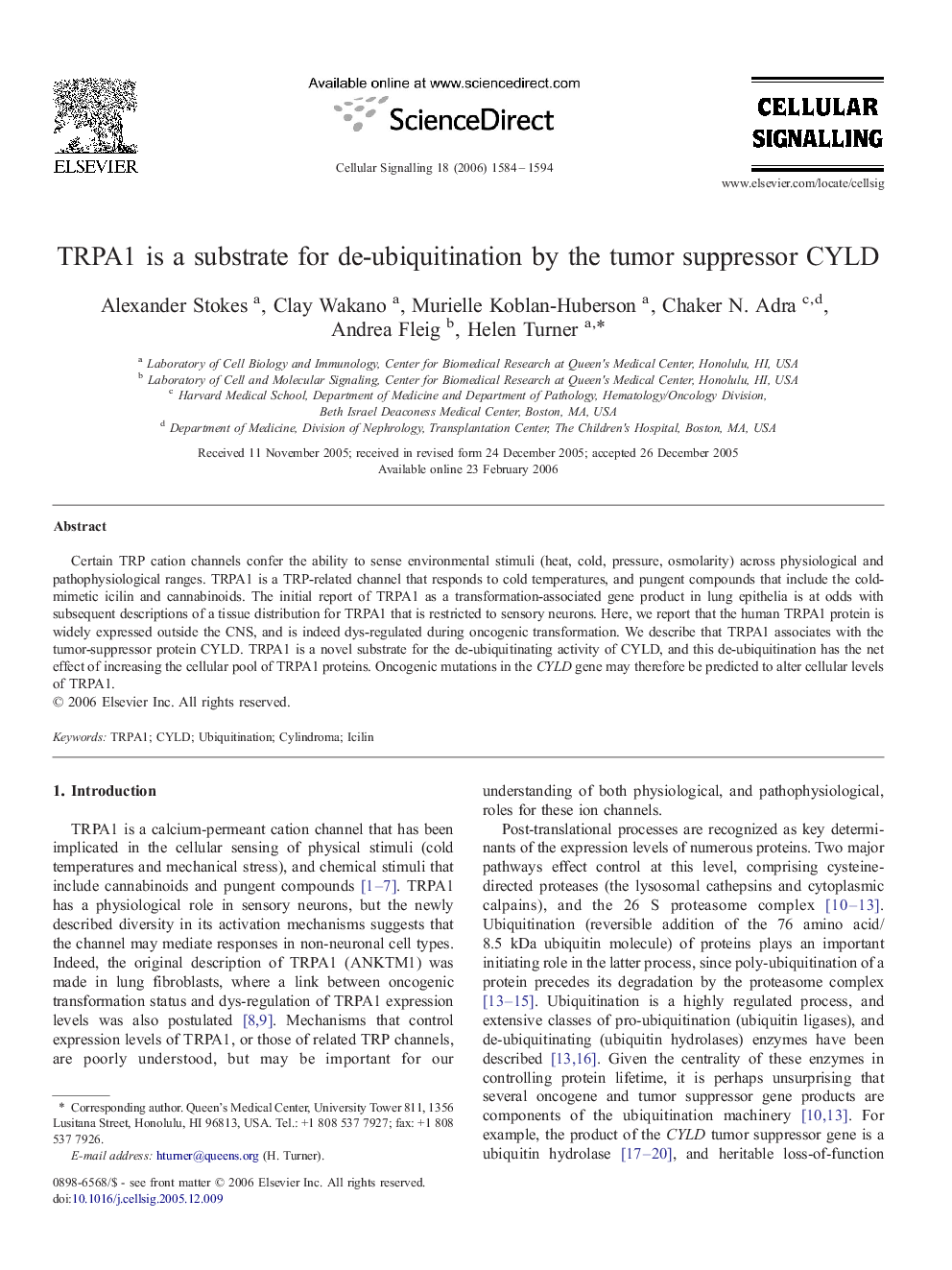| Article ID | Journal | Published Year | Pages | File Type |
|---|---|---|---|---|
| 1964436 | Cellular Signalling | 2006 | 11 Pages |
Certain TRP cation channels confer the ability to sense environmental stimuli (heat, cold, pressure, osmolarity) across physiological and pathophysiological ranges. TRPA1 is a TRP-related channel that responds to cold temperatures, and pungent compounds that include the cold-mimetic icilin and cannabinoids. The initial report of TRPA1 as a transformation-associated gene product in lung epithelia is at odds with subsequent descriptions of a tissue distribution for TRPA1 that is restricted to sensory neurons. Here, we report that the human TRPA1 protein is widely expressed outside the CNS, and is indeed dys-regulated during oncogenic transformation. We describe that TRPA1 associates with the tumor-suppressor protein CYLD. TRPA1 is a novel substrate for the de-ubiquitinating activity of CYLD, and this de-ubiquitination has the net effect of increasing the cellular pool of TRPA1 proteins. Oncogenic mutations in the CYLD gene may therefore be predicted to alter cellular levels of TRPA1.
